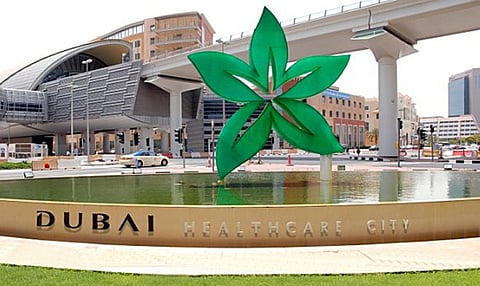How UAE became a medical tourism hub
Human resources, infrastructure, advanced health-care technologies, practices and standards make it an atrractive option

Some time ago, when I asked patients who underwent treatment in Asian hospitals why they overlooked the UAE hospitals with advanced medical devices, their reply was: Modern equipment require experienced hands.
Why did patients choose this particular Asian country? Because, it promotes medical tourism effectively. Medical tourism is viable only when a country is capable of providing high-quality medical services. And several other ancillary sectors too will benefit from this industry. This is reflected in the experiences of various countries that started out early. Singapore, Thailand and Germany are most popular destinations for people from the Gulf and the Arab world.
In the Arab world, Egypt topped the list of medical tourism destinations in the 1960s and 1970s; Jordan overtook it in the 1980s. Investing in health care to tap into medical tourism is not possible without government-supported, strategic investment plans. The sector can then contribute to a country’s development and can improve the quality of health-care services offered to citizens and residents.
The prerequisites for medical tourism include the availability of mineral and hot water springs, advanced medical centres and huge investments in the health-care sector. These conditions are available in many countries in the region, but the absence of sound strategies has often been the main obstacle.
In the Gulf nations, the costs for treatment abroad has become a significant burden on the budgets of health ministries, making it a constant topic in the meetings of specialised bodies. An annual bill of $30 billion (Dh110.34 billion) for treatments abroad is not a small amount. So these meetings focused on strategies to eliminate this burden.
A medical tourism industry was the answer. That calls for effective promotion in the Gulf Cooperation Council (GCC) initially, developing the health-care sector and supporting it with necessary legislations and policies to create an environment that spurs growth.
Perhaps, this is what the UAE realised back in the 2000s. According to a 2016 report by Alpen Capital, the UAE bagged 26 per cent of the total health-care spend by GCC governments. This rate has probably risen in the next two years due to the new health-care facilities, especially in Abu Dhabi and Dubai.
The UAE medical tourism industry became a huge success, and the country went on to become a global hub and the favoured destination of foreign patients seeking high-quality services. The UAE today has entered into a number of prestigious partnerships to bring in advanced health-care technologies, practices and standards from the West. In 2015, Cleveland Clinic and Mubadala Healthcare opened a hospital in the UAE with a 360-bed capacity. Johns Hopkins University operates Al Tawam Hospital in Al Ain, which has 466 beds.
Meanwhile, Dubai Healthcare City occupies a space of more than 20 million square feet, attracting major American corporations and other institutions as key partners in numerous fields, such as pharmaceuticals. By 2020, Dubai is expected to have around 34 pharmaceutical and medical equipment plants, and the value of the private pharmaceutical industry in the UAE, currently estimated to be Dh5.9 billion, is expected to reach Dh25 billion in 2025.
During the World Travel Market in London, officials from Abu Dhabi’s Department of Culture and Tourism said that they were cooperating with the Department of Health — Abu Dhabi to launch a new strategic plan for medical tourism that would include a global marketing campaign.
According to official statements, Abu Dhabi will occupy a prestigious position on the global medical tourism map because of its human resources and its excellent infrastructure. Currently, there are 4,740 doctors in the UAE, who speak more than 40 languages, and there are top-class health centres that offer treatment for a wide range of medical conditions. Just what the industry needed.
Mohammad Hassan Al Harbi is a renowned columnist and author whose writings cover various fields ranging from media studies to education.
Sign up for the Daily Briefing
Get the latest news and updates straight to your inbox



